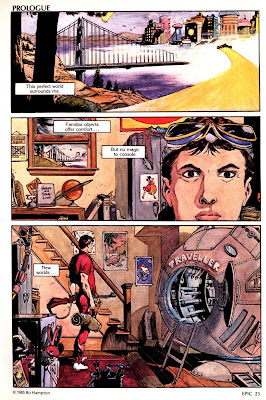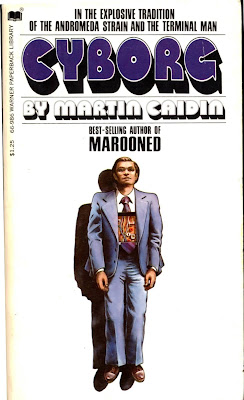Book Review: 'If You Believe the Soldiers' by Alexander Cordell
2 / 5 Stars'If You Believe the Soldiers' first was published in the UK in 1973; this Coronet paperback version (224 pp.) was published in 1975.
'Alexander Cordell' was the pen name of the UK author George Alexander Graber (1914- 1997). Throughout his career he focused on historical dramas set in Wales, although he also wrote political thrillers that portrayed Communist China in a favorable light, reflecting his sympathies for left-wing causes.
I first encountered 'If You Believe the Soldiers' when Joachim Boaz, at his 'Science Fiction and Other Suspect Ruminations' blog, profiled it in one of his 'recent acquisitions' posts.
I always am partial to fictional portrayals of a Dystopian Britain, and this book seems to fit into that genre.
Or does it.......... ?
The novel is set in the UK in the early 1980s. Its protagonist, Mark Seaton, is a middle-aged bureaucrat who oversees contracts for government construction projects. Seaton divides his time between his office in London and Hatherly, the family estate lying beside the banks of the placid Woking river. In a similar manner, Seaton divides his romantic time between his indifferent wife Moira, and his mistress Hallie Fitzgeralt.
As the novel opens, a right-wing Army officer named Colonel 'Bull' Brander has successfully carried out a coup and converted the UK to fascism. Brander has coerced cooperation from the weak Prime Minster, Paul Whiting-Jones; shut down independent media outlets; and, in a most Providential development, forced the Royal Family into exile in Paris.
The majority of the UK public, drained and apathetic after the strikes and financial chaos of the 1970s, have accepted this change of affairs. However, younger Britons refuse to accept fascist rule and have mounted a violent resistance; the opening pages of 'Soldiers' effectively communicate a near-future London in flames, wracked by destructive battles between the factions of Left and Right.
As a liberal Jew (the original family name is 'Goldstein'), Mark Seaton is hardly partial to the Brander regime, but he is willing to try and work within the system out of a sense of duty to maintain integrity in the government's business dealings.
But as the fascists consolidate power and demand unquestioning fealty from their minions, Seaton's growing defiance becomes a liability to his welfare, and the welfare of those close to him. And crossing the line can come with the most unpleasant consequences.......
For me, 'Soldiers' was a mixed bag. It is clearly not an action adventure novel, detailing the adventures of some Young Comrades who take up arms in a heroic fight against tyranny. Protagonist Seaton is rather dim-witted and passive, sticking to principle because he knows no other way; consequently, throughout the novel he continually is forced to react to one insult after another, never showing much in the way of initiative.
A subplot involving Seaton's adopted daughter of Chinese ancestry veers into Woody and Soon-Yi territory; while this may have been titillating in 1973, no doubt modern readers will find it......... creepy........
Cordell's prose style is uneven; there are lengthy passages, such as those dealing with an emotional resonance occasioned by the landscape of Wales, that deploy an almost poetic language; and then there are those passages where he promotes his left-wing political leanings through Righteous Discourse:
Your middle class did nothing about Heath's Rent Act, the stopping of school milk and meals, the means tests for men on the dole, the hire purchase rackets: the man in the street is on his blood uppers under the mortgage rates. And don't talk to me of demonstrations until you've lived in the slums, where they toss the rats out of the windows before they eat the meal.
*****
Of abstract mind, I wandered, dolefully considering the era
of violence in which I lived; a violence constantly denounced by the unholy liaison
of Church and State, which existed on the fringe of violence, ever ready to
indulge in an orgy of it, should its precepts, or profit, be threatened; using
as its emblem of benevolent dictatorship the public exposure of a man crucified,
bleeding from a dozen wounds before the eyes of the adolescents of a hundred
generations. And in the shadow of such sadism they protested about violence.
*****
......the British soul could never have expected such a decent into the abyss: we, who had never been slaves, were at last enslaved by racism, political adventuring and personal avarice.
'Soldiers' somewhat redeems itself in its closing chapters, which combine dark humor with a string of plot twists. But I finished the book thinking that the book's few moments of suspenseful drama came at the cost of forcing the reader to trudge through much ideological posturing. Accordingly, I give 'If You Believe the Soldiers' a two-star rating.



















































































